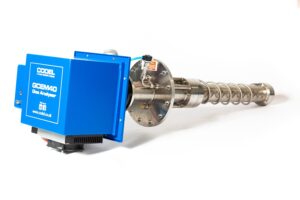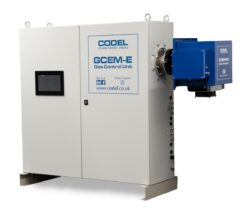Десульфуризация дымовых газов (ДДГ)
Мониторинг газа, пыли и потока FGD
В таких промышленных процессах, как сжигание угля, переработка нефти, сжигание отходов и добыча металлической руды, диоксид серы (SO2) является основным побочным продуктом. Это соединение представляет значительную опасность для здоровья человека, способствует образованию кислотных дождей и ухудшает окружающую среду. Для решения этих проблем используются технологии десульфуризации дымовых газов (FGD) для удаления SO2 из дымовых газов до их выброса в атмосферу. Системы FGD играют решающую роль в сокращении выбросов, особенно для угольных электростанций, которые либо уже оснащены скрубберами SO2, либо находятся в процессе модернизации своих систем для соответствия строгим экологическим стандартам.
Как работают системы FGD
Процесс, лежащий в основе большинства методов удаления SO2, включает распыление щелочного сорбента в дымовой газ, который реагирует с кислотным SO2, а также с другими кислотными газами, такими как хлористый водород (HCl) и фтористый водород (HF). Реакция нейтрализует эти загрязняющие вещества, делая их более безопасными для окружающей среды. Продукты этой реакции затем улавливаются в зависимости от типа используемой системы FGD. В сухих системах FGD продукты реакции улавливаются пылевыми фильтрами, в то время как в мокрых системах FGD используется гипсовый шлам в отстойнике для осаждения и удаления загрязняющих веществ. Системы FGD с морской водой очищают и безопасно утилизируют продукты реакции в море после соответствующей обработки.
Роль сорбентов в системах FGD
Известняк, известь и гашеная известь являются наиболее используемыми сорбентами в процессе десульфурации из-за их высокой эффективности в нейтрализации кислотных компонентов в дымовых газах. Эти материалы играют жизненно важную роль в сокращении выбросов SO2 и улучшении качества воздуха. Эффективно удаляя вредные соединения серы, эти сорбенты способствуют более чистой атмосфере и более устойчивому промышленному процессу, помогая отраслям соответствовать как нормативным, так и экологическим стандартам.
Что мы делаем
Постоянный мониторинг имеет решающее значение для обеспечения эффективной работы систем FGD и соответствия экологическим нормам. CODEL предоставляет ряд усовершенствованных продуктов мониторинга, предназначенных для отслеживания как входных, так и выходных газов, а также потока и выбросов пыли. Используя новейшие технологии, решения мониторинга CODEL предоставляют надежные данные в реальном времени, помогая операторам оптимизировать производительность своих систем FGD. Интегрируя системы CODEL в свои операции, отрасли могут снизить свое воздействие на окружающую среду, поддерживать соответствие и обеспечивать постоянную эффективность своих систем контроля выбросов, в конечном итоге способствуя созданию более чистой и здоровой окружающей среды.
Мокрый известняк ФГД с открытой распылительной башней

Полусухой ФГД, циркуляционный сухой скруббер

Подходящие продукты
DCEM2100 — это двухпроходной трансмиссометр, предназначенный для непрерывного измерения прозрачности и концентрации пыли в дымовых газах.
Diagram Download
Ищете руководство?
Пожалуйста, свяжитесь с нами, и мы будем рады помочь вам.
Анализатор GCEM40 — это экономичный, не требующий обслуживания прибор, предназначенный как для управления технологическими процессами, так и для мониторинга выбросов.
CO, NOx, SO2, HCl, CH4, CO2 и H2O
Горячий пробоотборный многоканальный газоанализатор GCEM40E — это проверенный промышленностью непрерывный монитор выбросов CODEL для сложных условий эксплуатации.
CO, NOx, SO2, HCl, CH4, CO2 и H2O
Задать вопрос
Для получения дополнительной информации о любом из наших продуктов, пожалуйста, заполните форму запроса, и сотрудник ответит вам в кратчайшие сроки.
Вы также можете позвонить по телефону: +44(0)1629 814351




